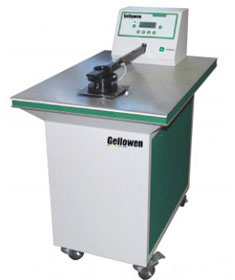- Qinsun Instruments Co., Ltd.
- Tell:+86-21-6780 0179
- Phone:+86-17740808215
- Address:No. 2578 Minhang District Gu Dai Road, Shanghai
- Contact:Mr. Li
- QQ:846490659
Introduction to NFC Technology

NFC architecture and related standards
The NFC function of mobile terminals consists of NFCController, NFC protocol stack, SE, SE access API, SE access control, and AP access SE chip. Its main functions are as follows:
1. NFCController: Refers to the NFC chip, which realizes the processing of analog and digital protocols defined by NFC card simulation, reader/writer, and point-to-point mode;
2. NFC protocol stack: Configure the working mode of NFC chips and implement various standards defined by NFCForum;
3. SE: Security chip, all businesses involving sensitive data, encryption operations, etc. (such as bank cards, bus cards) require separate security chip processing;
4. SE Access API: Open the interface for accessing SE to clients to achieve functions such as balance reading and aerial recharge;
5. SE access control: Control and authorize SE access to ensure SE security;
6. AP access to SE chip: The interface chip used by the client to access SE through the application processor. The type of SE used may also vary, such as when the SIM card is SE, this chip is called a modem. The above different modules can be combined to achieve different NFC functions, which can be roughly divided into two types: simple NFC and NFC with SE:
Simple NFC refers to NFC terminals that only have NFCController and NFC protocol stack. Due to the lack of SE, this type of terminal can only support NFC readers and point-to-point functions mentioned in the previous blog post, achieving security independent NFC functions such as business card exchange and label reading. Due to its simple structure and the fact that native systems above Android 2.3 have already implemented these functions, most NFC terminals on the market currently use this simple NFC. Compared to simple NFC, NFC terminals with SE all integrate a separate security chip SE. In addition to readers and point-to-point modes, they can support security applications introduced in card simulation mode (such as bank cards, bus cards, etc.). They can support non-contact card swiping on POS machines and customer access to SE, achieving functions such as reading bank and bus card balances stored in SE, and aerial recharge.
NFC enabled devices can exchange data in active or passive mode. In passive mode, the device that initiates NFC communication, also known as the NFC initiating device (master device), provides an RF field throughout the entire communication process, as shown in Figure 2. It can choose one of the transmission speeds of 106kbps, 212kbps, or 424kbps to send data to another device. The other device is called the NFC target device (slave device), which does not need to generate an RF field and uses load modulation technology, which can transmit data back to the initiating device at the same speed.





